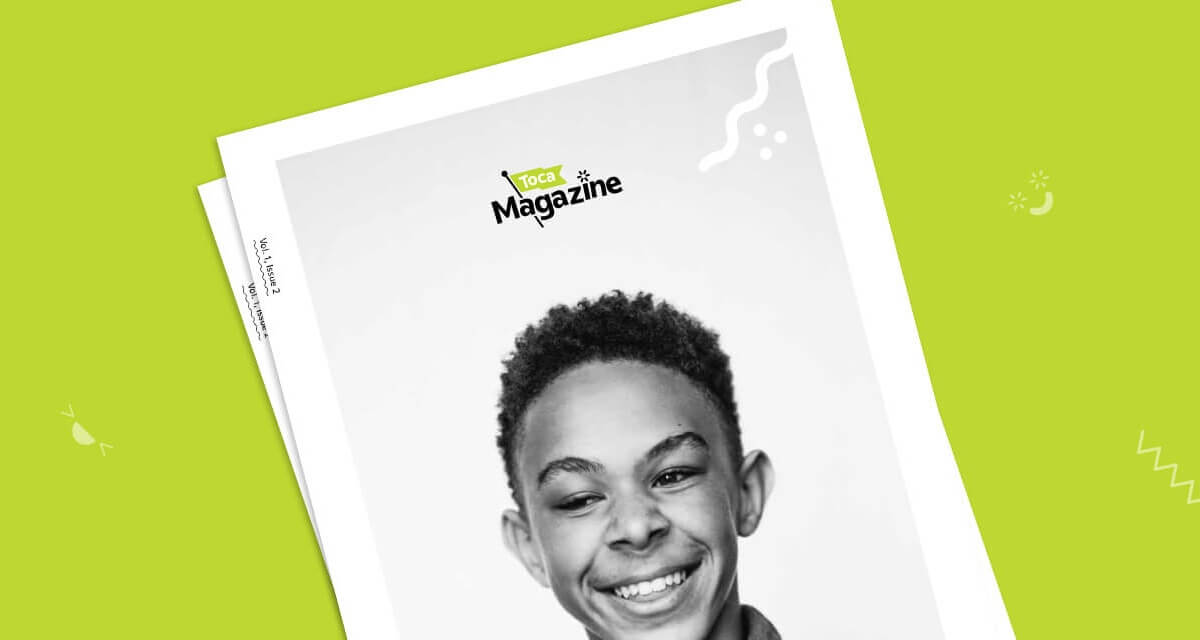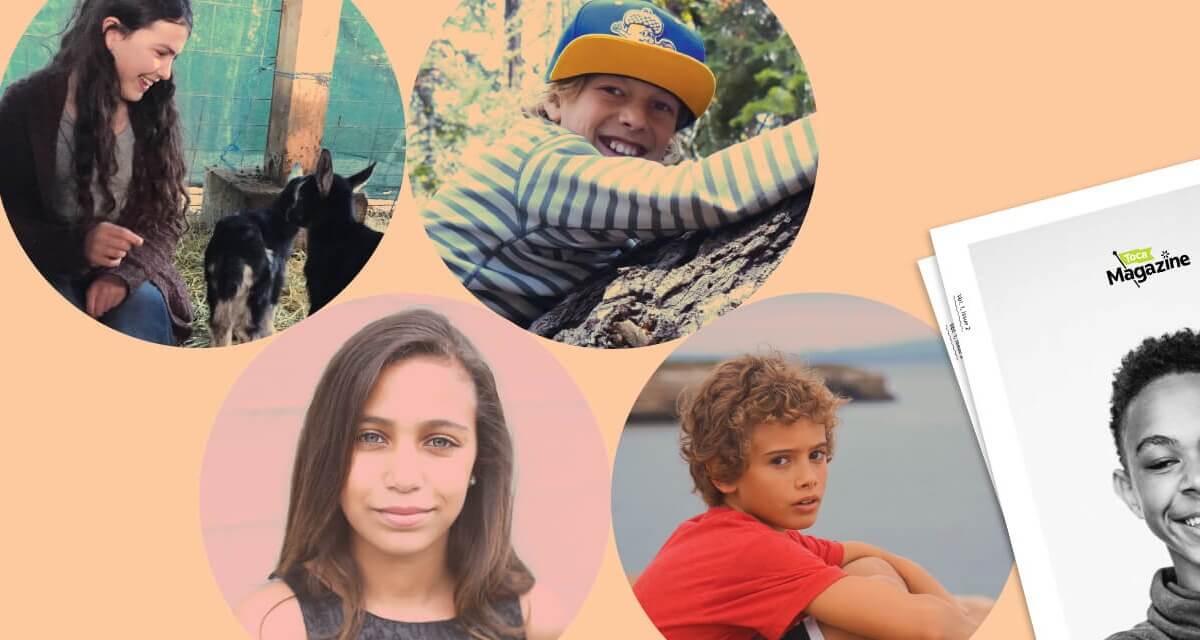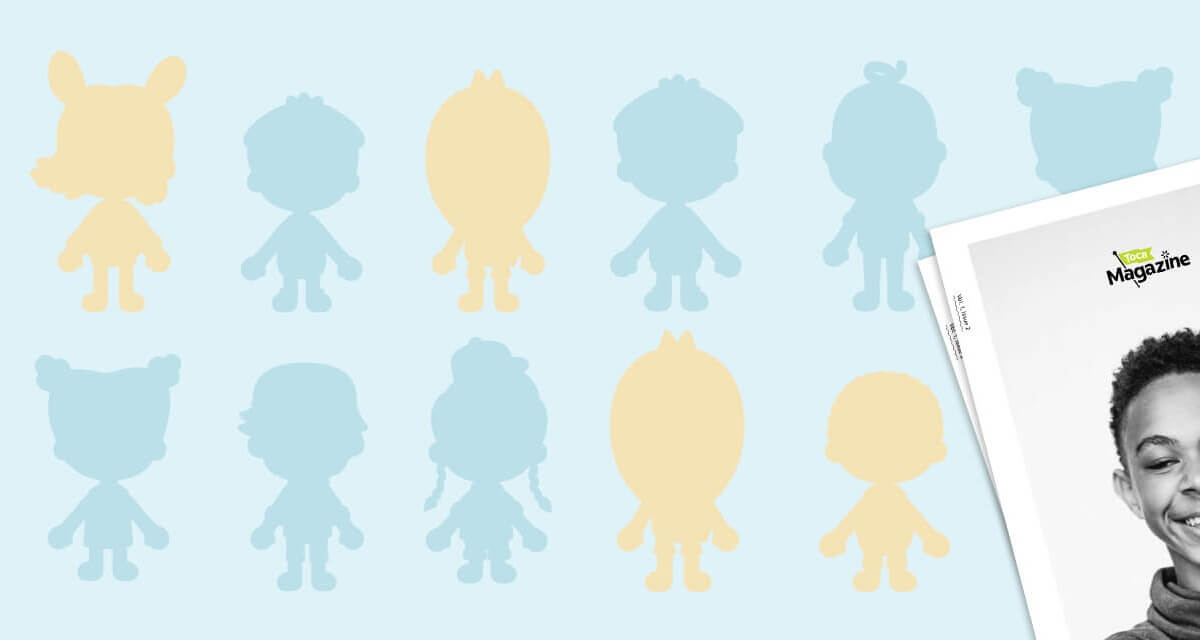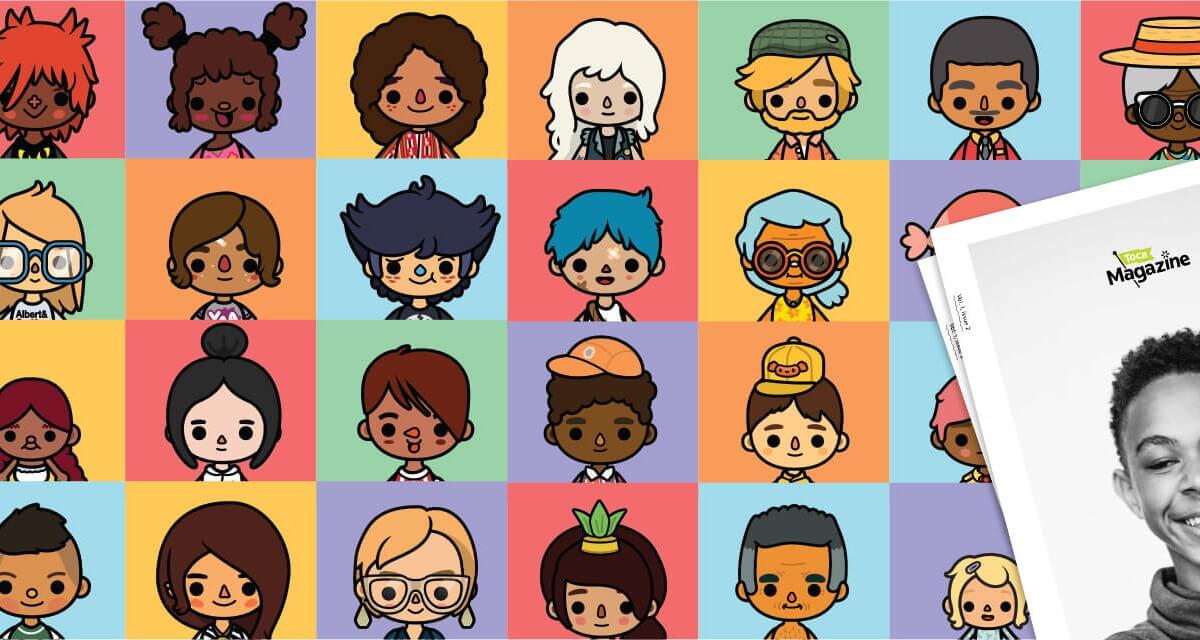Books, toys, digital content and more are constant in kids’ lives. How does this impact their identity?
- By
- Parker Barry
“I’d be her.”
“And I’d be her.”
My 6-year-olds do this duet every time they encounter new characters through media—on-screen, in shopping catalogs, on book covers or toy boxes. I eavesdrop to catch what clues I can about how they’re thinking about themselves—how they’re constructing their identities.
Kids develop a sense of themselves (self-identity) and a sense of belonging (group identity), beginning almost from birth. When kids have a strong, positive understanding of themselves and feel pride in their own origins—languages, families, cultures, religions, etc.—they feel worthy, respected, and valued, and develop a solid emotional foundation from which to grow and learn. Kids with positive identities are more optimistic, better able to face challenges and better equipped to do well in school and in life. Moreover, kids with healthy identities are less threatened by those who are different from them, and less likely to engage in hurtful behaviors toward other kids in order to feel better about themselves.
All around the world, as societies become increasingly diverse, it’s more important than ever to foster kids’ positive identity development in ways that affirm their origins while encouraging justice and acceptance of difference.
To do this, it’s good to know how kids develop their identities. It’s probably no surprise that kids learn about who to be and where to belong from their experience as they grow up. Their overall cognitive development—how they think and reason—plays a role, too. Families and communities provide an envelope for growing identities, as do schools, peers, and the media they are exposed to. When you find your kid suddenly rejecting home language, food, or other practices, you may want to look for clues outside the home—is she being respected for who she is? And you may also want to look at the environment you’re providing, including her experiences with media.
Kids with positive identities are more optimistic, better able to face challenges and better equipped to do well in school and in life.
Media Matter
Media (everything from books and physical toys to TV shows and apps count as media) are constant and commonplace in U.S. kids’ lives. Research indicates that media messages can influence how kids see and act toward themselves and others in the world around them. For several decades now, researchers have been talking about four interrelated ways in which media tells kids (or even grown-ups!) who to be. Kids:
- 1. compare themselves to media characters and feel they need to improve,
- 2. learn what’s acceptable and important from media models,
- 3. come to see repeated media portrayals as (“real life”), and
- 4. feel peer pressure from media to be and act in certain ways.
What Media Tell Kids About Who to Be
Given the importance of developing positive identities, and given that media are influential, what messages about race/ethnicity are prevalent in the media kids interact with? Sadly, overall media content and characters in the U.S. don’t match the diversity of the population, and tend to portray stereotypes. Also unfortunately, there isn’t a lot of research on the effects of media on kids’ understanding of race/ ethnicity and very little since the advent of interactive digital technologies.
Representation. Although some positive strides have been made in recent years, media characters are overwhelmingly white. Meanwhile, less than 50 percent of school-age children in the U.S. are non-Hispanic white. A few examples:
- A study by school librarians from a few years ago found that about 84 percent of recommended early chapter books had at least one white main or secondary character, with 17 percent having African-American protagonists, 6 percent Asian-American and 1 percent Hispanic/Latino. Non-human characters were more numerous than most non-white ethnic groups, books featuring characters of color tended to be biographies, and no books presented only non-white characters without the presence of a white character. The authors cite extensive research about why it’s important for young children of color to see themselves reflected as agentic, main characters in books at the cusp of their entree into reading, and for all early readers to benefit from realistic, non-stereotypical portrayals in the books they read everyday. A more recent study by the Cooperative Children’s Book Center at the University of Wisconsin-Madison counted only 16 percent of all children’s books to be primarily about non-white characters.
- Studies show many kids view top-grossing movies and primetime TV, so lack of representation there is also influential. The University of Southern California’s Comprehensive Annenberg Report on Diversity found almost three-fourths of speaking characters in entertainment film (movies, TV and streaming) are white. Kids of color, on the other hand, generally prefer characters who represent them, especially as they get older.
- Children’s toys—dolls, action figures, packaging—also appear to suffer from underrepresentation of the range of racial and ethnic diversity.
- Content analyses of console/ computer video games and MMO games show that white male adults are overrepresented as main characters, similar to TV. There are no studies I could find that track representation of diversity in newer forms of interactive kids’ media such as mobile apps, although concerned developers and researchers have set up a Diversity in Apps initiative (www.diversityinapps. com) to address the need. Likewise, there is very little research on young people, race/ethnicity, and social media.
Misrepresentation. Although representation is a first step, it is far from enough. In mainstream television, children’s products, and video games, people of color are represented stereotypically and, often, negatively. One could almost say it’s better not to be represented than be misrepresented. White males are shown in the most positive light and in a more diverse range of roles on television, for instance. So much so, researchers found that white boys who watch TV end up with greater self-esteem, while both white and black girls who watch similar amounts of TV end up with lower self-esteem. In addition to overt stereotyping, some studies show how even popular children’s animated films are rife with “microaggressions” or more subtle messages, such as casting villains with African-American or Latino accents.
What Media Can Be
Despite the problems with much of kids’ media on the race/ ethnicity front, some rays of hope remain:
- Diversity representation is improving. Young kids’ TV is noticeably more diverse. Public television, in particular, strives to represent and even overrepresent characters of color. African-American characters are especially well-represented.
- Media hold the potential to provide realistic and positive portrayals, and perhaps even reverse stereotypes, of relatively unfamiliar or misrepresented racial and ethnic groups. Various analyses of Sesame Street around the world, for instance, suggest that kids show positive intergroup attitudes after exposure to its content that’s been intentionally created to do so. Other nonfiction educational programming (video or interactive) may also help.
- Books, similarly, can be windows to whole new worlds.
- Programs that connect kids across cultural divides using online and interactive media hold promise.
- Digital interactive products with open-ended options for kids to create their own experiences may help put kids in the driver’s seat and not solely at the mercy of a distant publisher.
What Parents Can Do
As an immigrant woman of color in the U.S., and mother to biracial girls, I’m always on the lookout for media content that represents them, that exposes them to a diversity of characters and situations, and that presents role models for the kind of values and behavior I hope they will acquire. It isn’t easy, but here’s what my partner and I try to do:
![]() We actively choose books, toys, TV shows, apps and other media content that reflect our values and are likely to be a positive influence in their lives. This means not only trying to find diverse and representative creators and content, but going beyond “tokenism.” We want characters who have some depth to them, who are represented in relatable, authentic and varied situations. We love our friend Pooja Makhijani’s Mama’s Saris, the diverse range of books in Reading Rainbow’s Skybrary app, and the effortless blend of girls’ empowerment, racial/ethnic diversity and STEM learning in the PBS SciGirls TV show.
We actively choose books, toys, TV shows, apps and other media content that reflect our values and are likely to be a positive influence in their lives. This means not only trying to find diverse and representative creators and content, but going beyond “tokenism.” We want characters who have some depth to them, who are represented in relatable, authentic and varied situations. We love our friend Pooja Makhijani’s Mama’s Saris, the diverse range of books in Reading Rainbow’s Skybrary app, and the effortless blend of girls’ empowerment, racial/ethnic diversity and STEM learning in the PBS SciGirls TV show.
![]() We deliberately support their activities with media, encouraging them to interact, to go beyond the screen, to look for connections across media and to be active participants in their media lives. For example, they might watch a nature-based TV show, play the related app, create new stories with those characters, and also gather observations while hiking.
We deliberately support their activities with media, encouraging them to interact, to go beyond the screen, to look for connections across media and to be active participants in their media lives. For example, they might watch a nature-based TV show, play the related app, create new stories with those characters, and also gather observations while hiking.
![]() We encourage them to create, not just consume, media. No media product is going to be “perfect,” but we often tell them they can create their own! They can be authors of their own stories, makers of their own characters, builders of their own worlds, designers of their own games. So, for interactive technology, we try to ensure that they have some open-ended creation tools and products in their toy box. The girls are enjoying animating their own characters (or themselves!) and stories using ScratchJr, and writing books on Storyweaver, to name a couple.
We encourage them to create, not just consume, media. No media product is going to be “perfect,” but we often tell them they can create their own! They can be authors of their own stories, makers of their own characters, builders of their own worlds, designers of their own games. So, for interactive technology, we try to ensure that they have some open-ended creation tools and products in their toy box. The girls are enjoying animating their own characters (or themselves!) and stories using ScratchJr, and writing books on Storyweaver, to name a couple.
![]() We inoculate them against messages or interactions that might skew their views or limit their potential. First, we talk and listen to our kids when we can. We try to pay attention to how they’re talking and behaving about race and ethnicity, about themselves and about their peers. We talk to them about who they are, who others are, and about race, ethnicity, gender and prejudice. We talk together about who they want to be and what society—and media—may tell them about their choices. When they are a little older, we’ll watch something like Race: The Power of an Illusion with them, and visit the Understanding Race museum exhibit.
We inoculate them against messages or interactions that might skew their views or limit their potential. First, we talk and listen to our kids when we can. We try to pay attention to how they’re talking and behaving about race and ethnicity, about themselves and about their peers. We talk to them about who they are, who others are, and about race, ethnicity, gender and prejudice. We talk together about who they want to be and what society—and media—may tell them about their choices. When they are a little older, we’ll watch something like Race: The Power of an Illusion with them, and visit the Understanding Race museum exhibit.
We also want them to be media-literate, which means we want them to know that content they view or interact with isn’t in a vacuum, may be stereotypical or inaccurate, and that creators and marketers employ strategies to sell their wares. So when one of our daughters is drawn to trinkets and toys that are heavily branded, we have a conversation about marketing in words she can understand. Or when another daughter looks for the “peach” crayon to depict her (not peach) skin color, we discuss her feelings about it.
And finally, we want to give them as much “real world” experience of diversity as we can. Over time, we hope the “her” each one wants to be is comfortable in her own skin, secure in where she came from, delighted where others are and excited about where she can go.
Seeta Pai is a research and strategy consultant to social impact organizations. She’s led international research on kids’ media, child development, parenting, and education at Common Sense Media, Sesame Workshop, and UC Berkeley. Seeta holds a doctorate from Harvard Graduate School of Education and is the mother of two young girls. She is a member of Toca Boca’s diversity advisory board.



